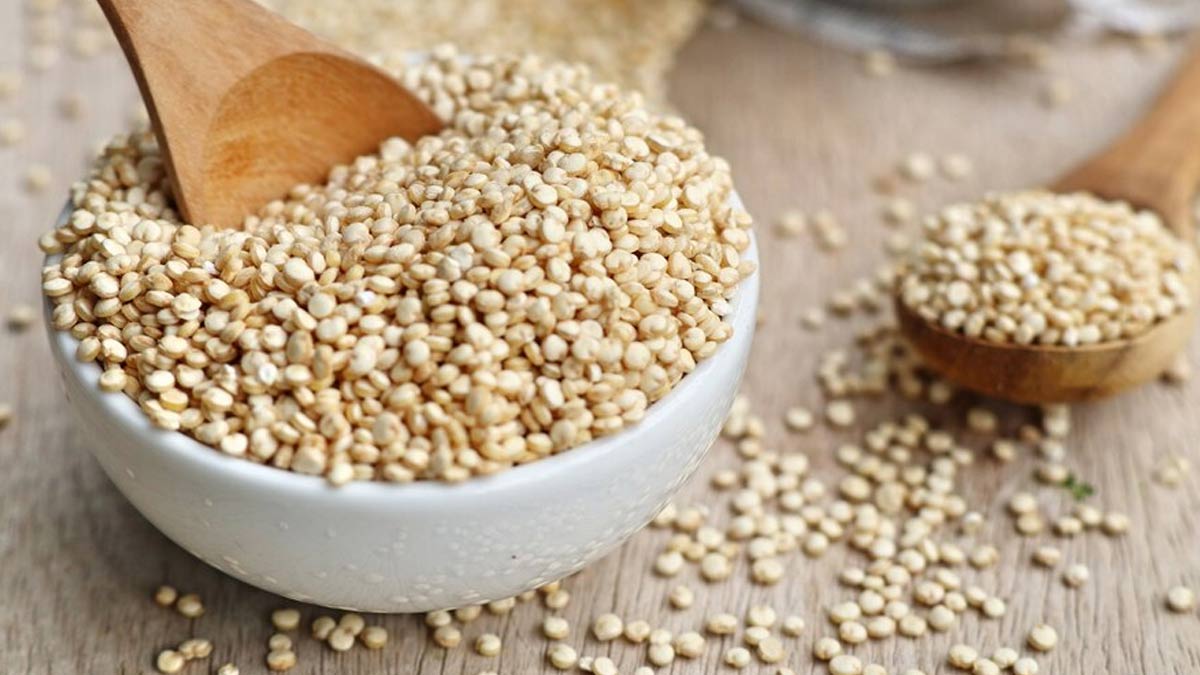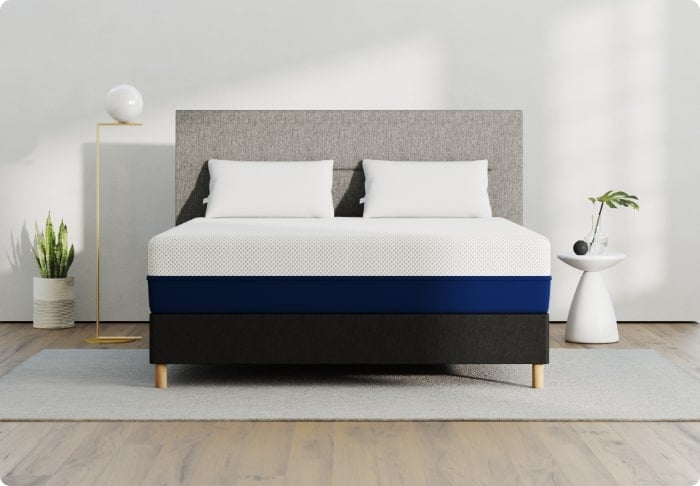Key Takeaways
- Breathability and Temperature Regulation: Linen’s looser weave allows for excellent air circulation, making it a preferred choice for those who sleep hot. Cotton, while not as breathable as linen, still offers a comfortable sleeping environment with its lightweight feel and moisture-wicking properties.
- Aesthetics and Style: Linen sheets exude a rustic charm with natural crinkles and marled fibers, adding warmth and coziness to a space. On the other hand, cotton sheets offer a more polished and versatile look, suitable for a wide range of design styles. The choice between linen and cotton can be influenced by the desired aesthetic for your bedroom.
- Hypoallergenic Properties and Sensitivity Considerations: Both linen and cotton sheets have hypoallergenic properties, making them suitable for allergy sufferers and those with sensitive skin. Linen, with its natural antibacterial qualities, is particularly gentle, while cotton offers a soft touch and breathability, catering to individuals with allergies or skin sensitivities.
Ah, the age-old debate: linen vs cotton sheets. Which fabric reigns supreme in the quest for the perfect night’s sleep?
It’s time to settle this once and for all! In this blog post, we’ll dive deep into the world of linen and cotton sheets, comparing their origins, characteristics, and benefits for your sleeping pleasure.
The Basics of Linen and Cotton Sheets
Linen and cotton sheets are both beloved for their natural fibers, which provide unique benefits to sleepers. Linen, originating from the flax plant and consisting of linen fibers, has been used by humans for over 30,000 years, making it one of the oldest fabrics in the world. Cotton, on the other hand, is derived from the cotton plant and offers a soft, cozy feel that many people adore.
Despite both originating from plants, linen and cotton fabrics possess unique characteristics that distinguish them from each other. Linen fabric, made from linen flax fibers, is known for its durability and longevity, with some linen sheets lasting for decades. Cotton sheets, while still popular, may only last up to two years with regular use. But this is just the beginning of the comparison between these two popular fabrics.
Understanding Linen Sheets
Linen sheets, a popular type of linen bedding, are made from flax plant stalks and boast superior breathability, making them a go-to choice for hot sleepers. Although they may feel slightly stiff or rough at first, linen sheets soften with every wash, eventually providing a luxuriously comfortable sleeping experience.
In fact, some of us have even switched from being die-hard cotton sheet fans to linen enthusiasts. Bear in mind, though, that linen sheets may vary in breathability and texture depending on the brand or type selected.
When selecting between linen and cotton sheets, durability and price are significant factors. Linen’s longevity can justify its generally higher cost.
Understanding Cotton Sheets
Cotton bedding, made from the fibers of the cotton plant, provides an array of options for those who value its gentle touch and lightweight texture. There are several types of cotton bedding available, including:
- Upland cotton
- Sateen cotton
- Cotton percale sheets
- Egyptian cotton sheets
- Pima cotton
Each type of cotton bedding has its own unique properties and advantages.
The softness of cotton sheets is determined by factors such as thread count, fiber length, and weave type. For instance, Egyptian cotton sheets, renowned for their luxurious softness, often have a thread count between 400 and 700.
Percale and sateen weaves also contribute to the texture and softness of cotton sheets, with percale providing a cool, crisp feel and sateen offering a smooth, shiny finish.
Breathability and Temperature Regulation
When it comes to breathability and temperature regulation, both linen and cotton have their advantages. Linen sheets, with their looser weave, allow for more air flow, making them less likely to trap heat than other fabrics. Cotton sheets, on the other hand, also provide a comfortable sleeping environment, thanks to their lightweight feel and moisture-wicking properties.
But which fabric is the better option for those who sleep hot, live in warmer climates, or need to sleep in a heatwave? Let’s compare linen and cotton sheets in terms of their breathability and temperature-regulating abilities.
Linen’s Airy Comfort
Linen’s superior breathability is due to the thicker fibers and looser weave of the fabric. This allows air to flow freely through the material, keeping you cool and comfortable even on the hottest nights. Additionally, linen’s moisture-wicking properties ensure that sweat and water evaporate quickly, helping you stay fresh and dry throughout the night.
While the breathability of linen sheets can vary depending on the brand or type, their natural fibers and loose weave generally provide consistent air circulation and cooling comfort. So, if you’re a hot sleeper, linen sheets are definitely worth considering.
Cotton’s Cozy Softness
Cotton sheets, while perhaps not as breathable as linen, still offer a comfortable sleeping environment thanks to their softness and moisture-wicking properties. Long-staple cotton fibers contribute to the soft and smooth feel of high-quality cotton sheets, which in turn allows air to pass through, keeping you cool and comfortable throughout the night.
While both linen and cotton sheets provide breathability to some extent, it’s ultimately a matter of personal preference. If you’re seeking the ultimate in cooling comfort, linen may be the better option. However, if softness and a cozy feel are more important to you, cotton sheets may be the way to go.
Types of Linen and Cotton Sheets
With so many types of linen and cotton sheets available, it’s essential to understand the differences between them in order to find the perfect set for your needs. Cotton sheets, on the other hand, come in a variety of types such as Egyptian cotton, Pima cotton, and Supima cotton, each with their own unique characteristics.
What are the differences in quality, comfort, and durability between these various types of linen and cotton sheets? Let’s take a closer look at luxury linen sheets and popular cotton sheet varieties.
Luxury Linen Sheets
Luxury linen sheets provide unmatched comfort, breathability, and durability, making them an ideal choice for those seeking superior quality.
While luxury linen sheets are often more expensive, ranging from $250 to $900 for a queen-size set, their outstanding features like cooling comfort, enduring softness, and eco-friendliness justify the investment for those who value high-quality products.
Popular Cotton Sheet Varieties
When it comes to popular cotton sheet varieties, there are several options to choose from:
- Egyptian cotton: Renowned for its luxurious softness and durability, Egyptian cotton sheets typically have thread counts ranging between 400 and 700.
- Pima cotton: Another premium option, Pima cotton is known for its high-quality, breathable, and long-lasting nature.
- Supima cotton: A strong and durable type of cotton, Supima cotton is also a popular choice for sheets.
Comprehending the distinctions between these various cotton sheet types can guide you to find the ideal set that fits your needs and preferences. Whether you prioritize softness, breathability, or durability, there’s a cotton sheet variety out there that will meet your requirements.
Aesthetics and Style
Beyond functionality, the visual appeal and style of your bed sheets can have a significant impact on the overall mood and atmosphere of your bedroom.
Linen sheets, with their natural crinkles and marled fibers, exude a rustic charm that can add warmth and coziness to any space.
Cotton sheets, on the other hand, offer a more polished and versatile look, making them suitable for a wide range of design styles.
Let’s explore the aesthetics of both linen and cotton sheets in greater detail, examining their unique visual qualities and how they can enhance the look of your bedroom.
Linen’s Rustic Charm
The natural texture and earthy look of linen sheets impart an authentic, rustic feel that is both enduring and adaptable. The unique slubbed characteristics of the fabric, combined with its organic nature, create an effortlessly cozy atmosphere in your bedroom. Even those of us who have never been fans of printed sheets can appreciate the beauty of saturated colors on linen.
Linen’s rustic charm is not only limited to its appearance; the fabric’s eco-friendliness and breathable qualities also contribute to its appeal. If you’re looking for a set of sheets that exude warmth and comfort while being kind to the environment, linen sheets made from high-quality linen fabrics are an excellent choice.
Cotton’s Sleek Elegance
Cotton sheets, with their smooth texture and wide array of colors and patterns, offer a more refined and sophisticated look compared to their linen counterparts. Different weaves such as sateen or twill enhance the refined elegance of cotton bed sheets, adding to their sophisticated look.
With cotton sheets made from high-quality cotton fabric, you have the freedom to choose from an extensive range of designs, including:
- Floral patterns
- Geometric patterns
- Stripes
- Traditional textile-inspired motifs
This versatility allows you to find the perfect set of cotton sheets to complement your bedroom’s design aesthetic and existing pieces such as bed shams, whether you prefer a minimalist, modern, or classic style.
Hypoallergenic Properties and Sensitivity Considerations
Both linen and cotton sheets have hypoallergenic properties, making them suitable options for allergy sufferers and those with sensitive skin who want the perfect complement to a hypoallergenic mattress.
Linen, with its natural hypoallergenic and antibacterial qualities, is particularly gentle on the skin, causing no irritation or allergic reactions. Cotton, on the other hand, is also breathable and moisture-wicking, making it less likely to harbor allergens and irritants.
To delve deeper into the hypoallergenic properties of linen and cotton sheets, we shall examine how each fabric accommodates individuals with allergies and sensitive skin.
Linen’s Natural Hypoallergenic Qualities
Linen’s natural fibers and tight weave of linen sheets act as a barrier against allergens, repelling dust mites and preventing irritation. Additionally, linen’s breathability and moisture-wicking abilities help to keep your skin dry and comfortable, further reducing the risk of irritation or allergies.
Choosing linen sheets allows for a peaceful night’s sleep, free from concerns of allergens or irritants, thus making them an excellent choice for individuals with allergies or sensitive skin.
Cotton’s Gentle Touch
While cotton sheets may not be as naturally hypoallergenic as linen, they still provide a gentle touch suitable for sensitive skin. The softness and breathability of cotton sheets can help to prevent irritation and allergic reactions, ensuring a comfortable sleeping environment for those with allergies or skin sensitivities.
When choosing cotton sheets for sensitive skin, opt for organic cotton, 100% cotton sateen, or 100% cotton percale sheets as these types are particularly breathable and hypoallergenic. By selecting the right type of cotton sheets, you can enjoy a restful night’s sleep without compromising your skin’s comfort.
Caring for Your Linen and Cotton Sheets
Proper care and maintenance of your linen and cotton sheets are essential for ensuring their longevity and preserving their appearance. Both types of sheets require specific care routines to keep them looking and feeling their best.
For linen sheets, this involves washing them in cold water with a mild liquid detergent. Meanwhile, cotton sheets can be washed in warm or cool water with a non-toxic detergent.
Adhering to the correct laundry care instructions and washing symbols for your linen and cotton sheets can extend their lifespan, allowing you to enjoy these natural fabrics’ benefits for an extended period.
A couple of other general rules for good sheet care are:
Let’s take a closer look at the care and maintenance guidelines for both linen and cotton sheets.
Linen Sheet Care
Following a few basic care guidelines is necessary to maintain your linen sheets in prime condition. Here are some tips:
- Wash them before the first use and then weekly if you use them daily.
- Use a mild liquid detergent specifically designed for linen.
- Avoid bleach or harsh chemicals.
When it comes to drying, opt for a low heat setting or air dry your linen sheets to preserve their texture and appearance. By abiding by these care guidelines, you can maintain the softness, breathability, and durability of your linen sheets for an extended period. And with proper care, you can expect your linen sheets to last between three to five years.
Cotton Sheet Care
Maintaining your cotton sheets is fairly straightforward, yet there are some guidelines to adhere to in order to preserve their softness and quality. Wash your cotton sheets regularly with warm or cool water and a non-toxic detergent to keep them clean and fresh.
Avoid high temperatures and fabric softeners, as these can damage the cotton fibers and reduce the lifespan of your sheets.
Exploring Other Sheet Fabrics
While cotton and linen sheets are undoubtedly two of the most popular bedding options, there are several other fabrics used for sheets that provide unique benefits. Let’s examine some key alternatives like bamboo, tencel, microfiber, and modal sheets.
Bamboo Sheets
Bamboo bed sheets have grown in popularity in recent years due to their soft, silky feel and moisture-wicking properties. Bamboo viscose or rayon sheets mimic the luxurious qualities of silk. Meanwhile, 100% bamboo lyocell sheets offer unparalleled softness that gets even better with washing. Both types of bamboo sheets sleep cool, are eco-friendly, and may be a suitable hypoallergenic choice for those with sensitive skin.
See also:
Tencel Sheets
Tencel, also known as lyocell, is a soft, smooth fabric made from wood pulp. Tencel sheets provide exceptional breathability, moisture-wicking capabilities, and microbial resistance. As a natural and sustainable fabric, tencel offers an eco-friendly alternative to cotton. The fabric’s gentle nature also makes tencel sheets a great option for those with sensitive skin.
See also:
Microfiber Sheets
Microfiber sheets are budget-friendly, ultra-soft, and durable. Made from synthetic fibers like polyester and nylon, microfiber sheets emulate the silky feel of higher-end fabrics. They are also quite lightweight and easy to care for. However, microfiber may not be the best choice for hot sleepers, as the fabric tends to trap heat.
See also:
Modal Sheets
Modal is a type of rayon fabric made from renewable wood fibers. Known for its softness and breathability, modal sheets offer moisture-wicking capabilities that help hot sleepers stay cool. While not as long-lasting as cotton or linen, modal sheets provide an affordable alternative with a luxuriously soft feel. Those with sensitive skin may also find modal sheets gentle and non-irritating.
Flannel Sheets
Flannel sheets offer unbeatable coziness that makes them ideal for winter bedrooms in cooler weather and climates. Typically made from cotton, wool, or synthetic fibers, flannel sheets feature a brushed, napped surface that provides unmatched warmth and softness. Though too warm for hot sleepers, flannel sheets are a must-have for the colder months when you want extra comfort and insulation.
Look for 100% cotton flannel for the highest quality that gets even softer over time. Just be aware that flannel sheets may pill with frequent use.
See also Flannel vs Cotton Sheets
FAQs
Which is better cotton or linen sheets?
Cotton sheets offer luxurious comfort that tends to improve with each wash. They are breathable and suitable for diverse climates. Linen sheets, on the other hand, have a distinctive texture initially, with a slightly rougher feel that evolves into remarkable softness over time. Renowned for superior breathability and natural temperature regulation, linen excels in warm climates.
Both materials boast durability, but cotton sheets, depending on the type and weave, are generally easy to maintain with machine washing. Linen sheets, though prone to wrinkling, are cherished for their relaxed aesthetic and may require air-drying. Cost varies widely; while high-quality cotton can be pricey, linen is often considered a premium option due to its labor-intensive production and exceptional qualities.
Is cotton or linen better in hot weather?
Both cotton and linen are breathable fabrics suitable for hot weather, but linen is often considered superior. Linen has natural moisture-wicking properties, allowing it to absorb and evaporate moisture quickly, keeping you cool and comfortable. It also tends to feel cooler to the touch than cotton.
Do hotels use linen or cotton sheets?
Hotels typically use high-quality cotton, like Egyptian and Supima, with a percale weave. Occasionally, though, you might find hotel sheets made from linen.
Keeping your bed and sheets clean will help recreate that luxury hotel feel. You can even go a step beyond just washing and drying to iron your sheets for a smoother fabric.
Why is linen so expensive?
Linen is often more expensive than cotton due to the labor-intensive and intricate process involved in its production. Flax, the plant from which linen is derived, requires careful cultivation, harvesting, and processing. The extraction of fibers and the weaving process are time-consuming. Additionally, linen’s popularity contributes to its higher cost in the market.
Does linen get softer than cotton?
Cotton is generally softer and fluffier than linen, especially right out of the package, making it a better choice for softness and comfort. Cotton fabric also tends to be less prone to wrinkling than linen.
However, linen generally becomes softer and more supple over time with washing and use. While cotton also softens with wear, linen’s fibers tend to break in and become more pliable, resulting in a luxurious feel. Frequent washing and proper care contribute to the enhanced softness of linen fabrics.
Conclusion
In conclusion, both linen and cotton sheets offer unique benefits in terms of comfort, breathability, durability, and style. While linen sheets may be the ideal choice for hot sleepers and those seeking a rustic, eco-friendly aesthetic, cotton sheets offer a versatile and polished look with a cozy, soft feel.
Ultimately, the choice between linen and cotton sheets comes down to personal preference and the specific needs of your sleeping environment. Whichever fabric you choose, you’re sure to enjoy a blissful night’s sleep wrapped in the natural comfort of linen or cotton sheets.






























